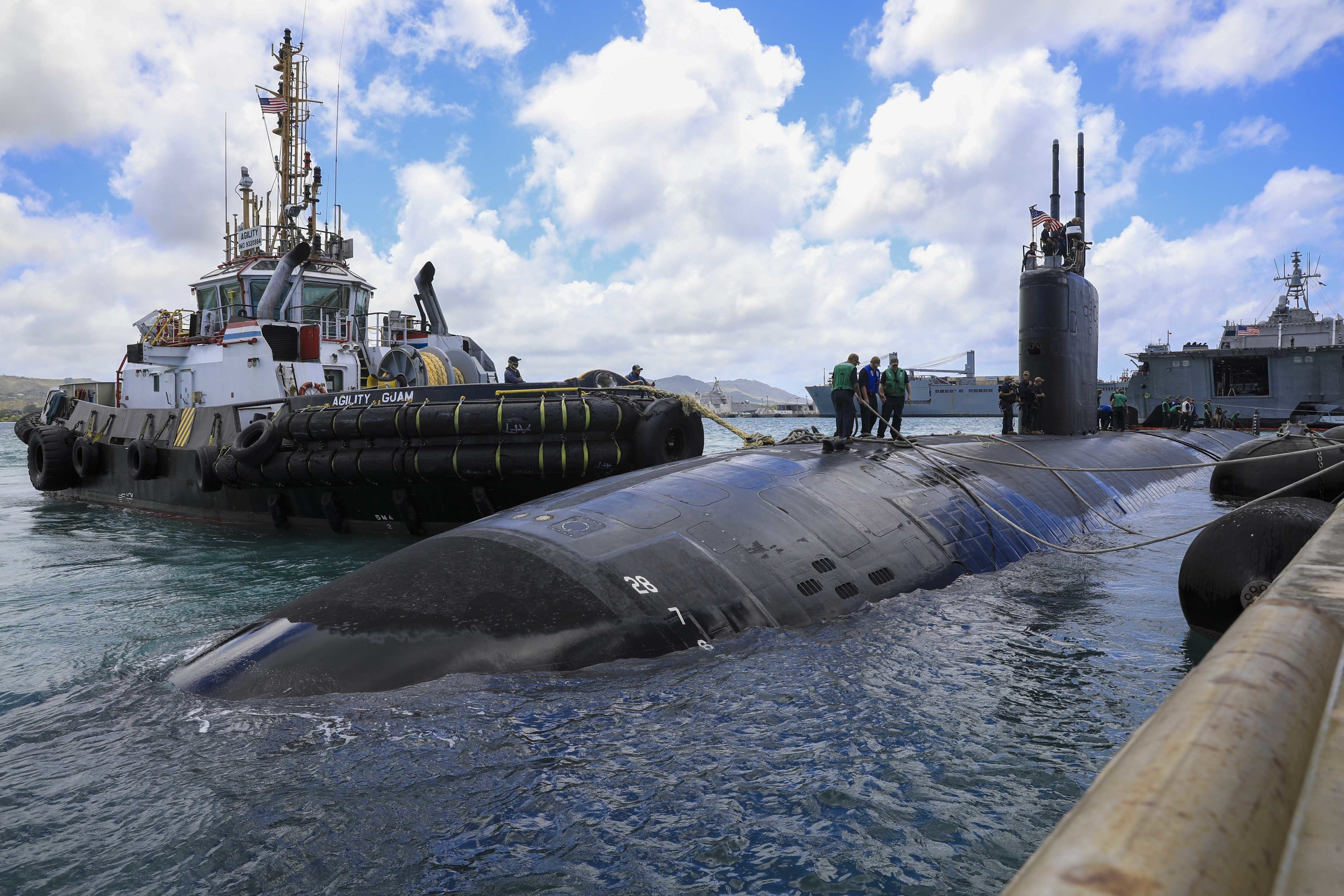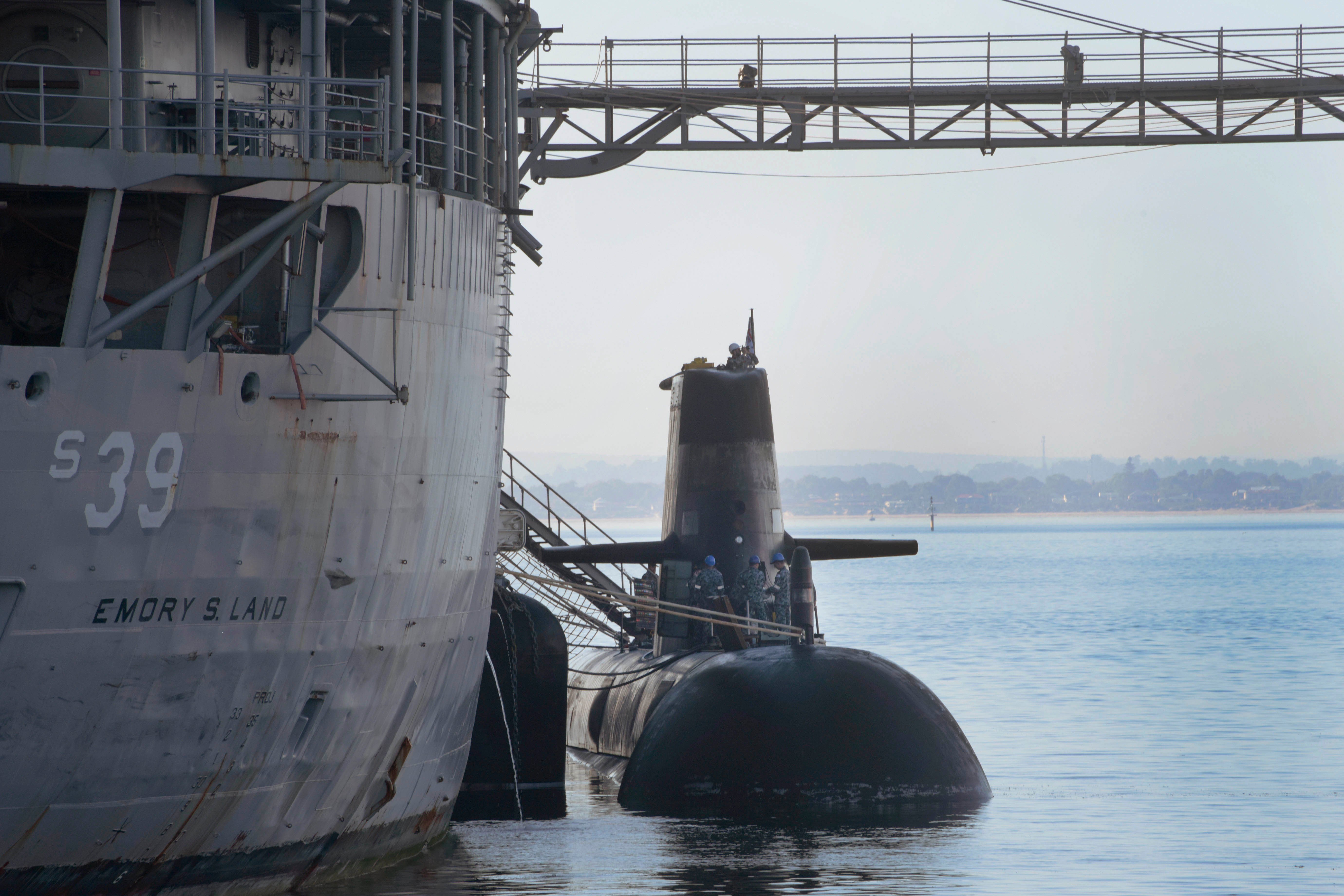
ARLINGTON, Va. — Amid strategic competition with China, the United States plans to augment its ability to operate submarines out of Guam, the commander of U.S. submarine forces in the Pacific said today.
After sending Los Angeles-class nuclear attack submarine USS Springfield (SSN-761) to Guam earlier this year, the Navy will spend the next five to 10 years building out both its maintenance capacity and training capabilities on the U.S. territory.
“Looking to the future, we are going to expand our submarine operating capability from Guam to optimize our presence and warfighting capacity in the Western Pacific,” Rear Adm. Jeffrey Jablon, the commander of Submarine Force, U.S. Pacific Fleet, said Wednesday at the Naval Submarine League’s annual symposium.
“This is going to include augmenting our maintenance capacity with the necessary facilities, infrastructure and personnel; building additional pier facilities and services; and expanding the capabilities of our shore-based training facilities in Guam,” he added.
That timeline to expand submarine capacity and capabilities out of the U.S. island territory corresponds with what Jablon described as the “decade of maximum danger,” as it relates to China’s desire to reunify Taiwan with the mainland.
“And that specifically refers to the [People’s Republic of China]. You know, we’ve heard we’re at an inflection point. It’s a critical decade. It’s a decisive decade. And it’s true. That is my number one concern as the Pacific Fleet force commander for the submarine force. We are in the decade of maximum danger,” Jablon said.

“China has fielded the largest navy in the world, guaranteeing its numerical advantage in the south and east China Seas. And as the [People’s Liberation Army Navy] surface fleet and undersea force improves their capabilities, we will intensify our efforts to prepare our undersea force to deter, and if necessary, defeat the PLAN.”
After forward-deploying Springfield to Guam, the U.S. Navy now has five attack boats operating from the island. Both of the Navy’s submarine tenders – USS Frank Cable (AS-40) and USS Emory S. Land (AS-39) – are also stationed in Guam.
Jablon pointed to a rearming and reloading exercise that Frank Cable performed earlier this year in Australia with Springfield and Royal Australian Navy Collins-class attack boat HMAS Farncomb (SSG-74) as an example of the U.S. Navy’s undersea capability in the region.
The admiral said he expects to have a replacement for the 1970s-era submarine tenders by the late 2020s.
“Both the Emory S. Land and the Frank Cable will be in operation until that tender turnover, so there will not be a gap in our tender capabilities,” he said.
Jablon also pointed to Ohio-class ballistic missile submarine USS Nevada’s (SSBN-733) visit to Guam at the start of this year. The Navy rarely announces where its boomers are operating.
“It reflected our commitment to the Indo-Pacific region and complimented the many exercises, operations, training and military cooperation activities conducted by our strategic forces throughout the world,” Jablon said of the port visit.





